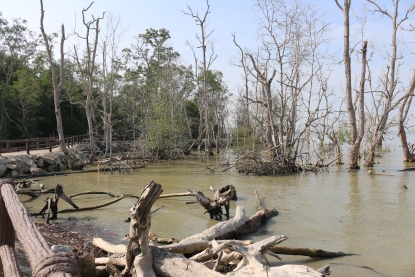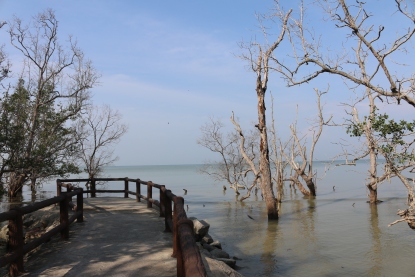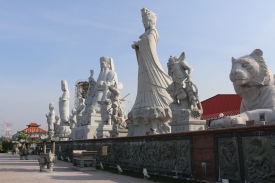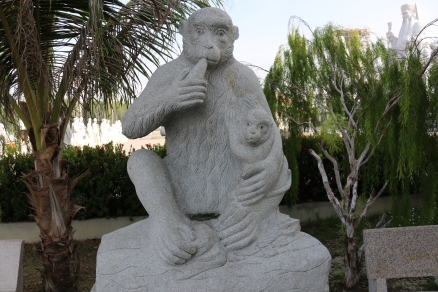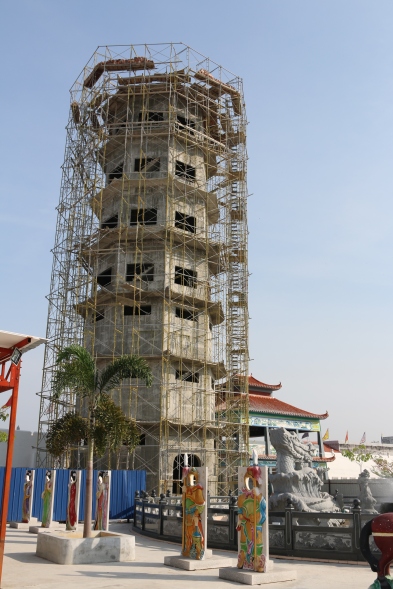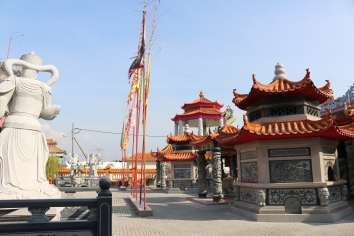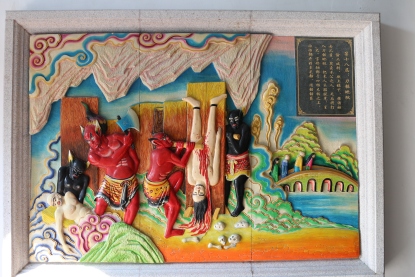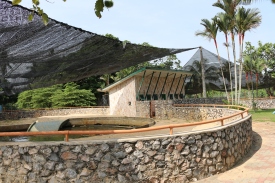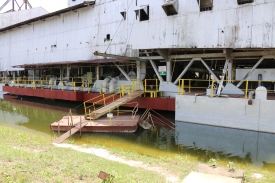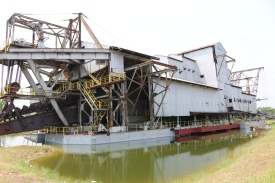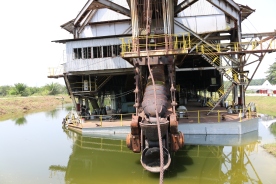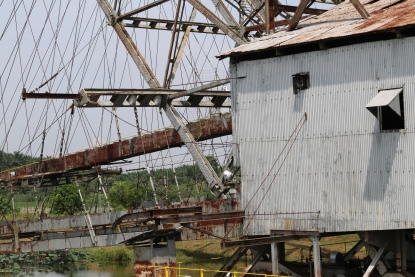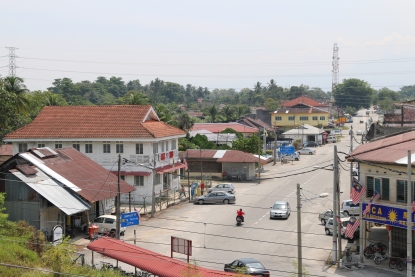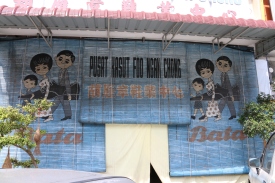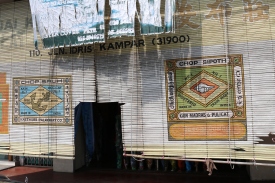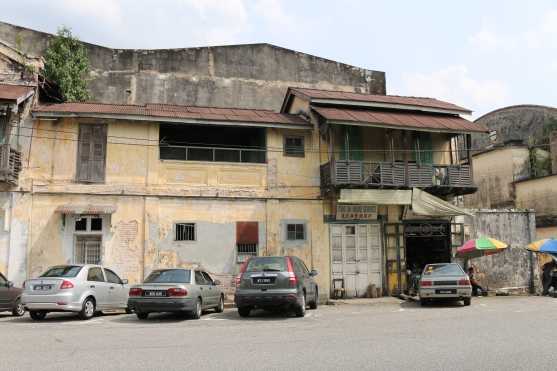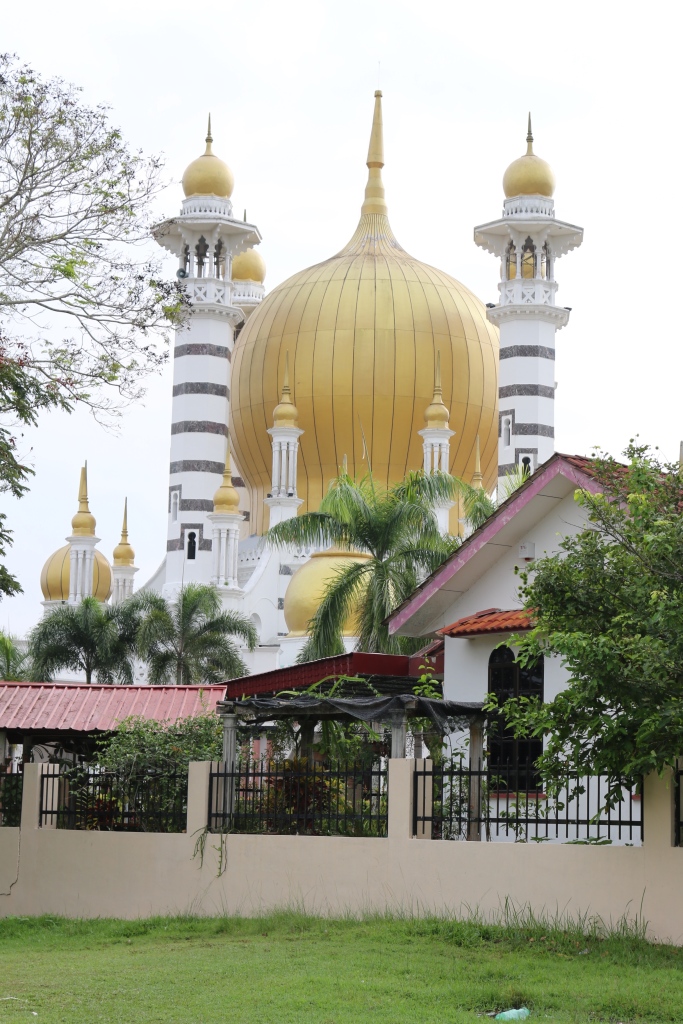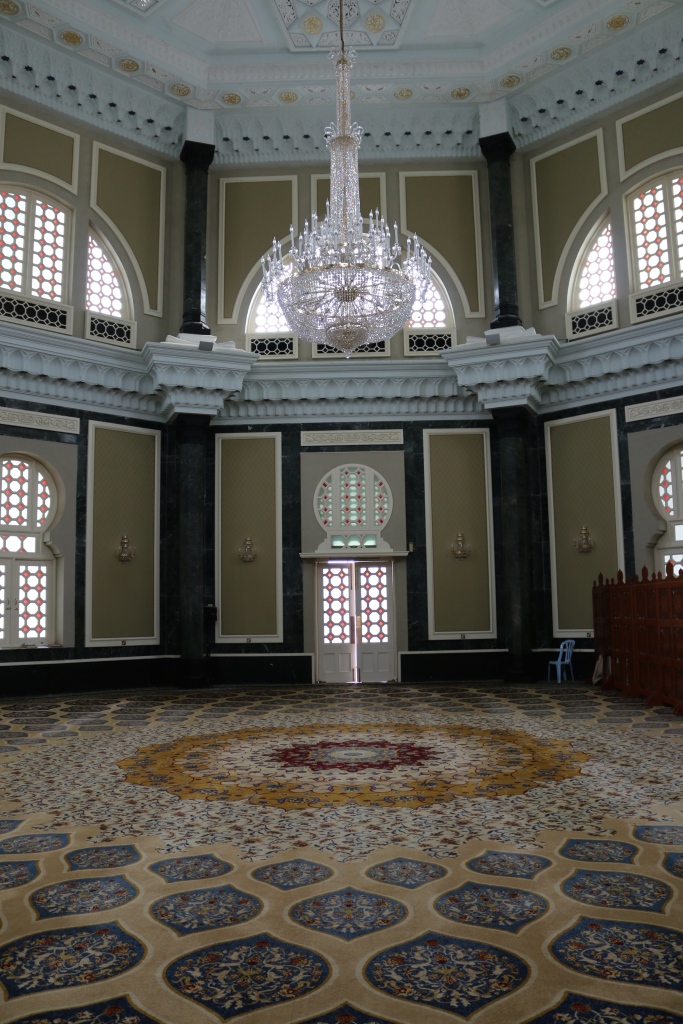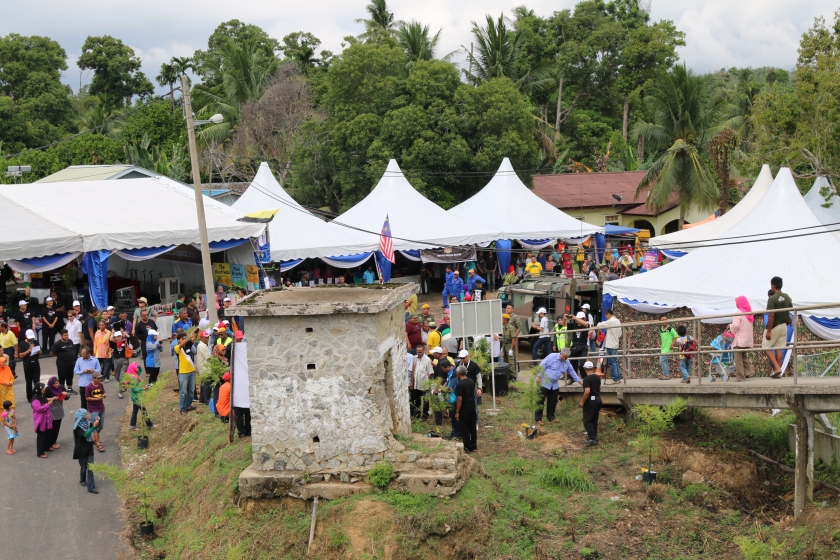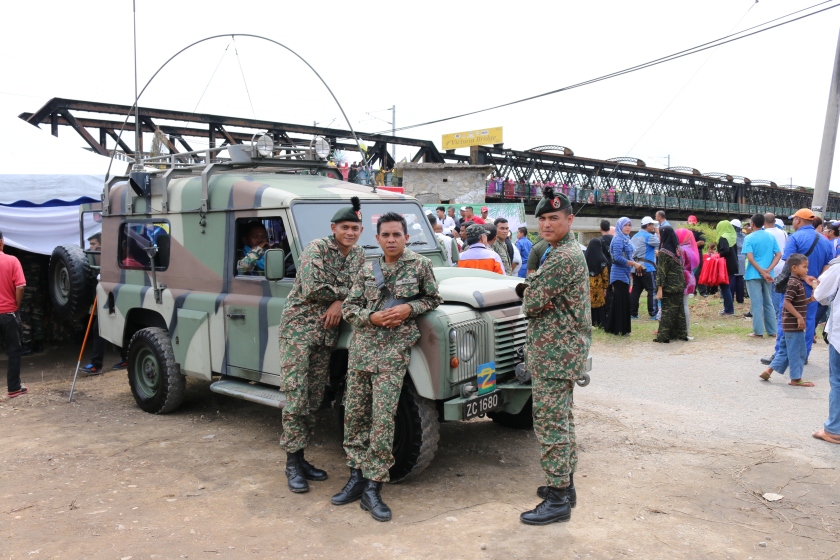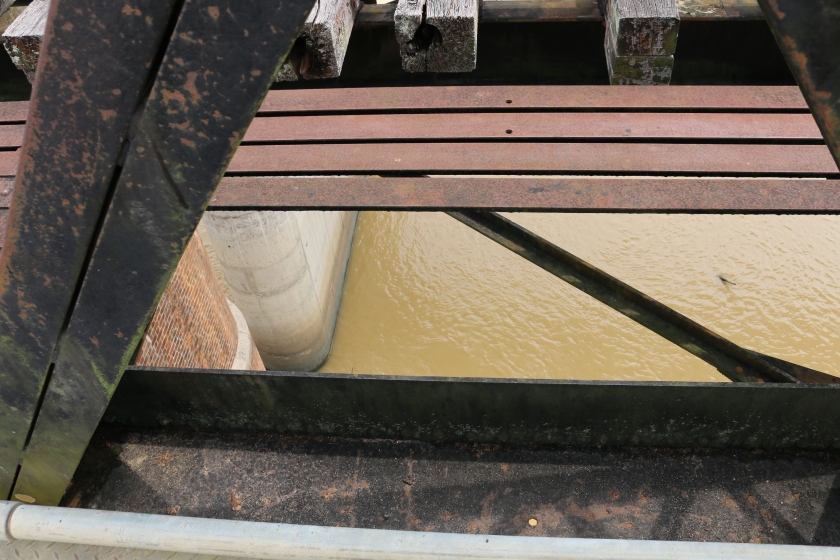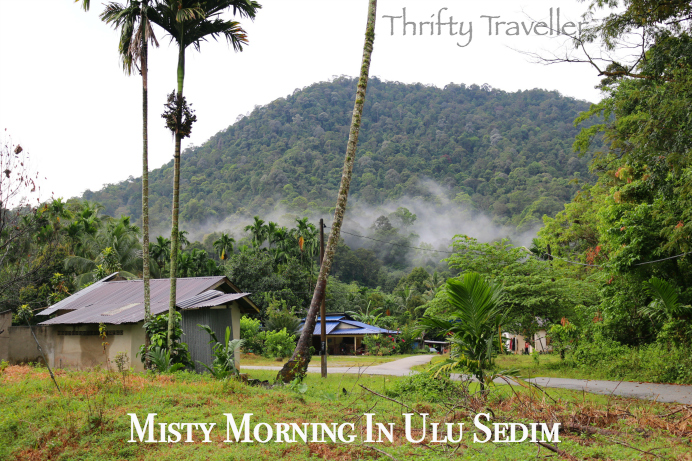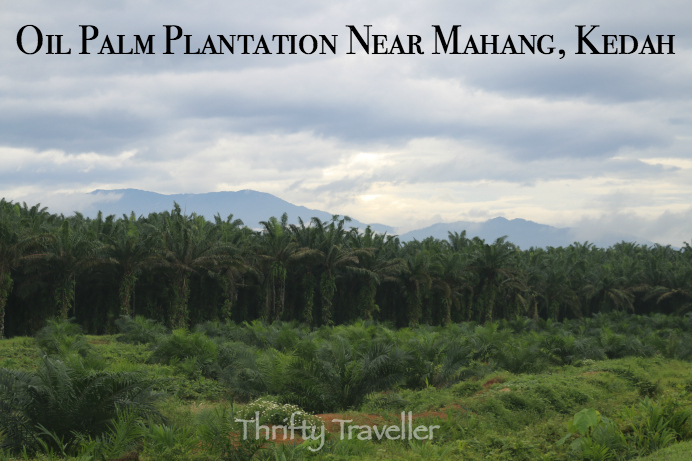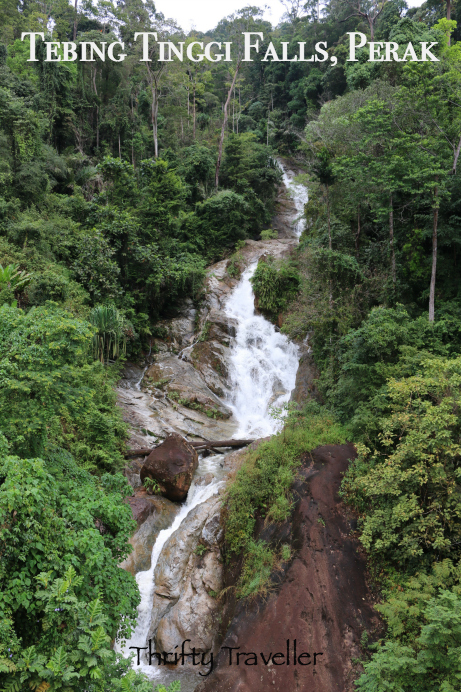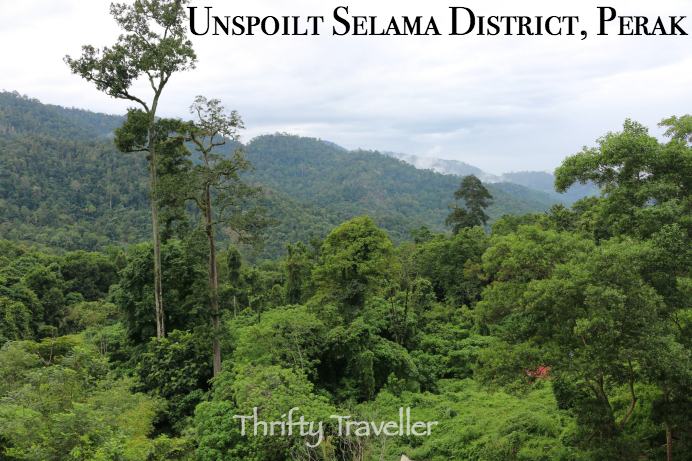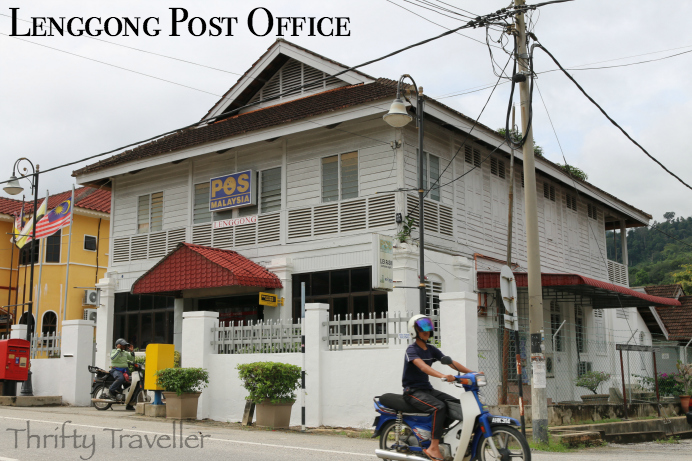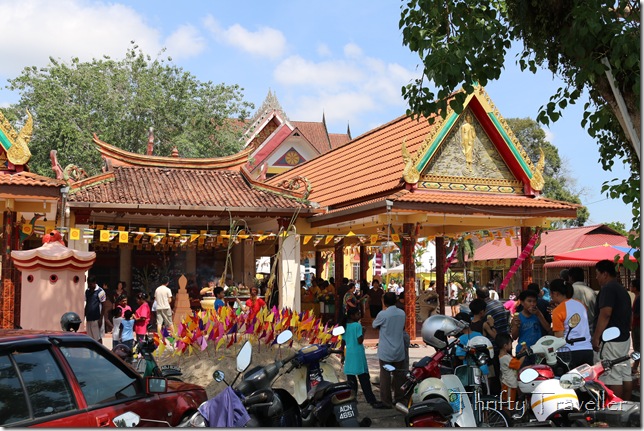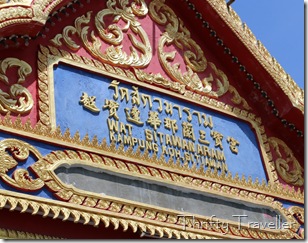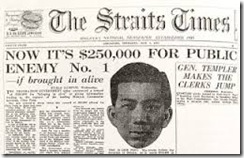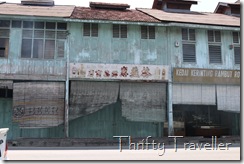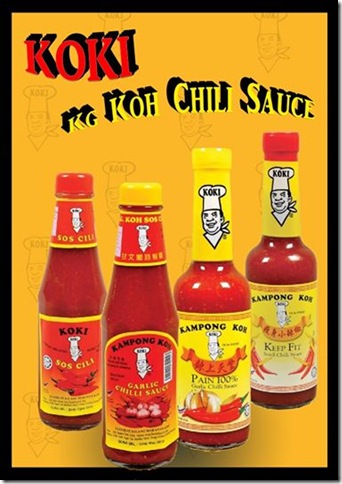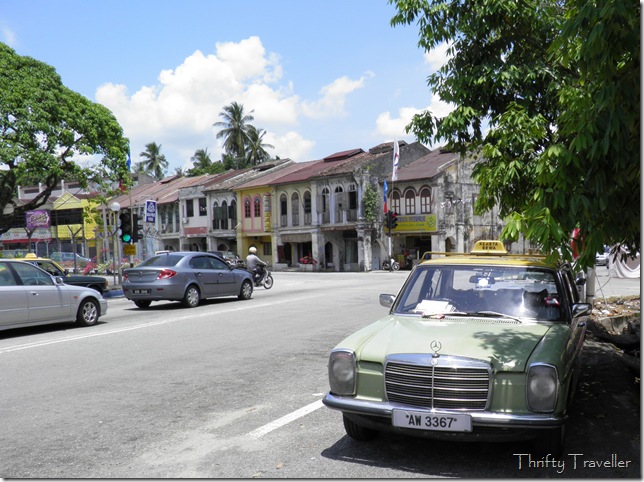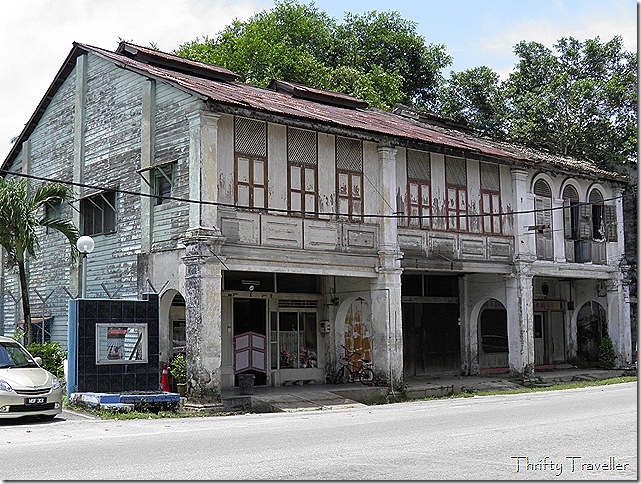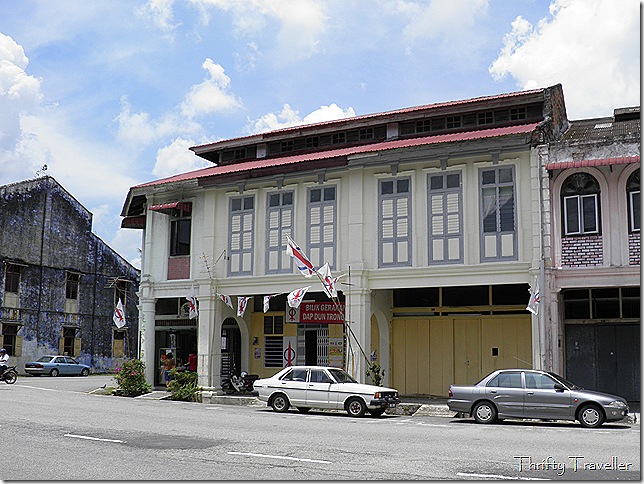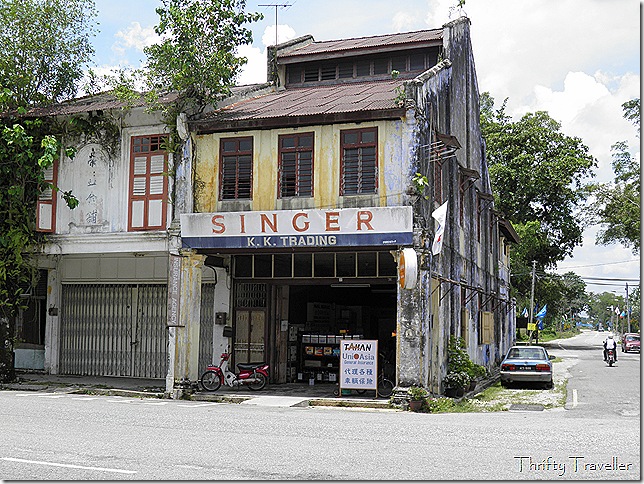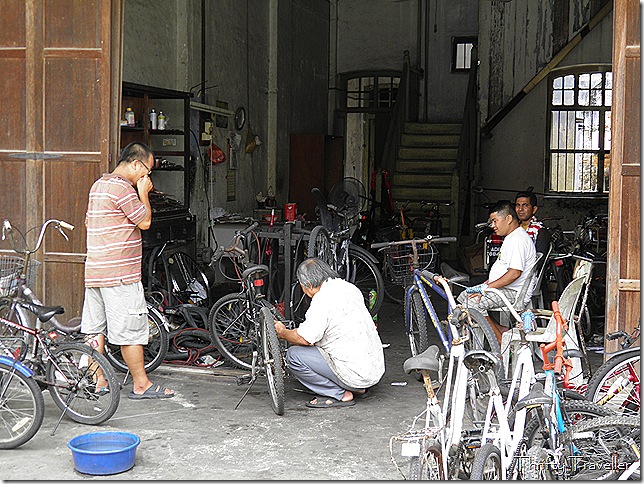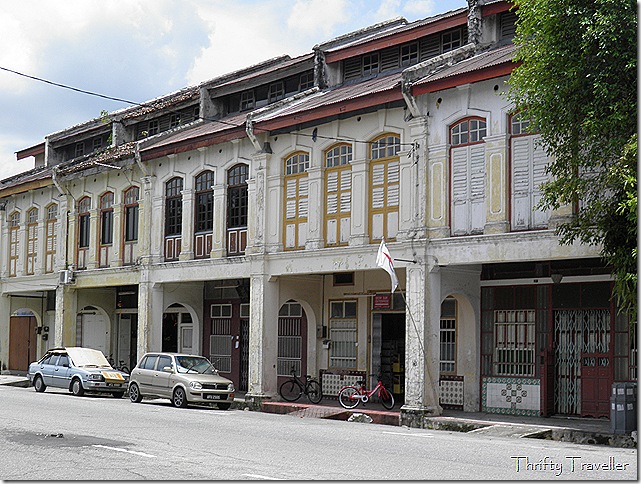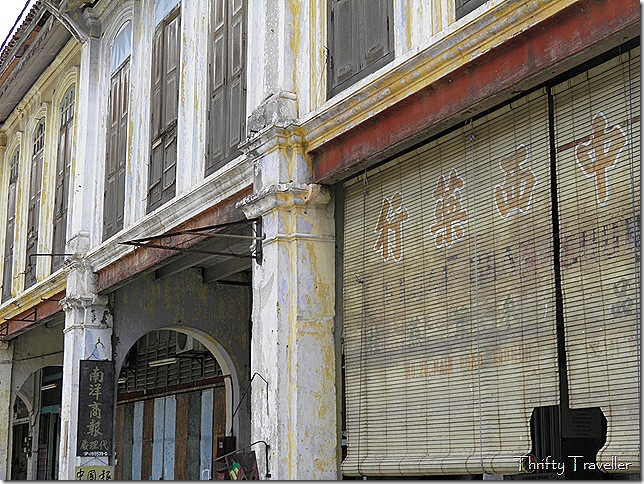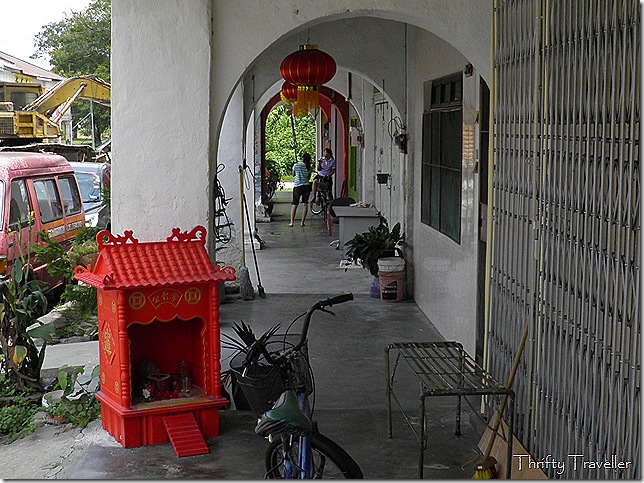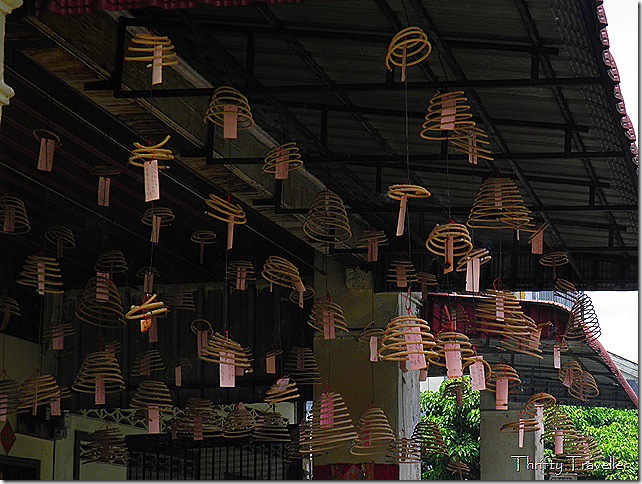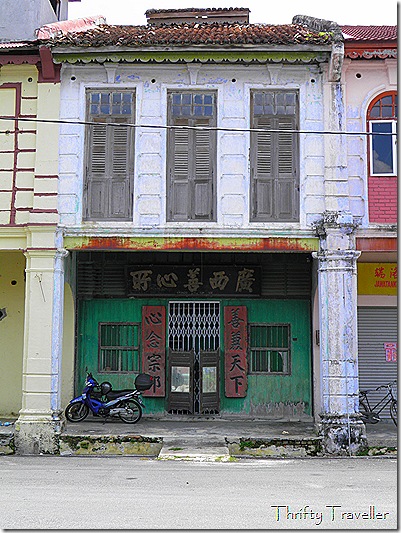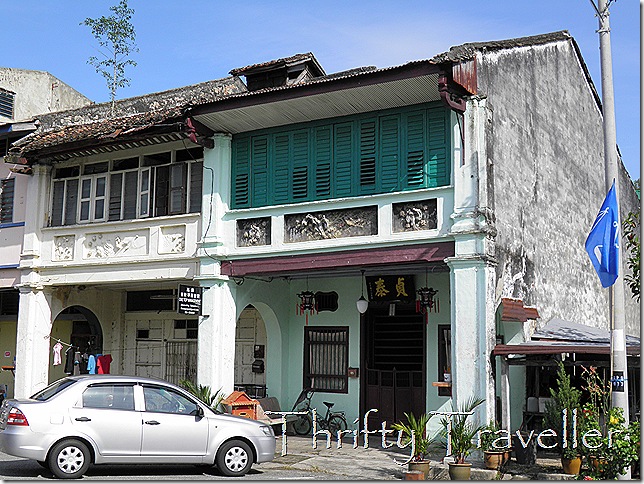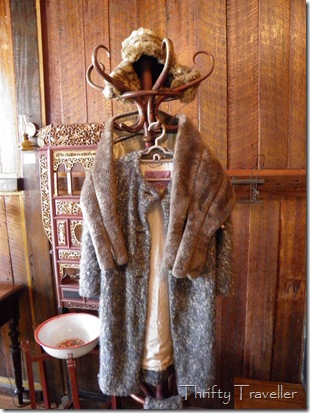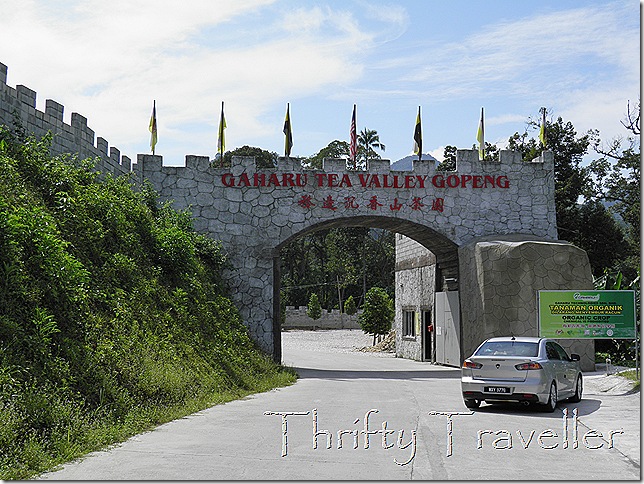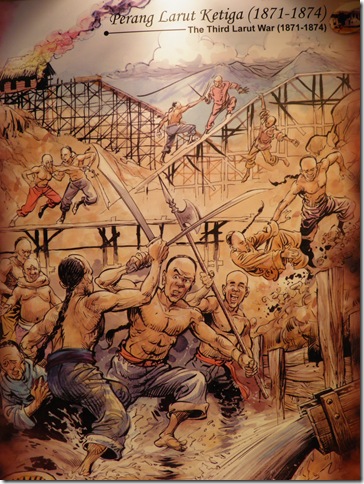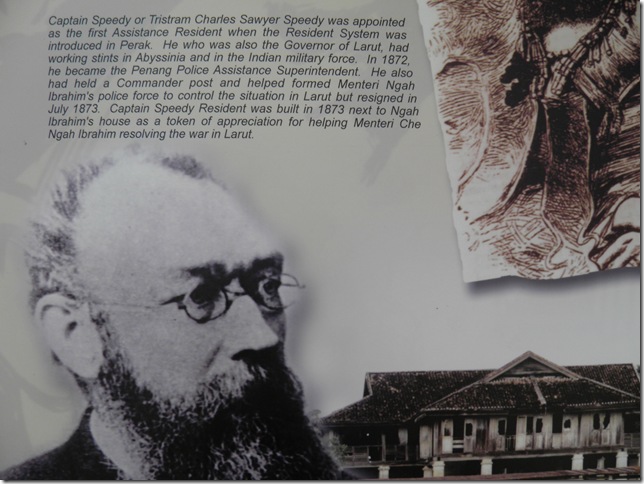
The usual way of crossing from the West Coast of Peninsular Malaysia to the East Coast, at least for people in the Klang Valley area, is via the East Coast Expressway from KL to Kuantan. It’s an excellent road with some nice scenery and the 250 km journey can be completed in about 3.5 hours.
I wanted to try an alternative route, much longer and slower and hopefully even more scenic via the Cameron Highlands and Gua Musang and from there on minor roads though palm oil plantations as far as Lake Kenyir in Terengganu. Here is a map:
Google Maps calculates the distance as 502km and the travelling time as 8.5 hours though I would not recommend attempting it all in one day. I lingered 3 days on the trip.
I started my trans-Malaysia crossing at Kampung Pasir Panjang Laut, a small village near Sitiawan, Perak on the shores of the Straits of Malacca.
This was the western-most point of the route, a small patch of unhealthy mangrove forest in front of an interesting Chinese temple called Tua Pek Gong.
One of its main attractions of Tua Pek Gong temple was a bendy tunnel in the shape of a dragon which I entered through its mouth and emerged from its tail. The interior walls of dragon were lined with murals depicting the Ten Chambers of Hell and illustrated in gory detail the gruesome tortures which await those who do not live a moral and respectable life in this world. Enlarge the bottom right photo above for an example.
Having seen enough, I drove inland on Highway 5 through Sitiawan and Ayer Tawar. My route road crossed the Perak River near Bota Kanan where I visited the Conservation Centre for River Terrapins.
There were some sizeable mature terrapins in a couple of the holding ponds but they were fairly shy and only popped their heads above water to take bites from floating cabbage leaves.
Continuing on Route A15, I passed a sign for Tanjung Tualang Tin Dredge. I visited this place five years ago (and blogged about it) but decided to drop in again because I had read somewhere that it is now possible to go inside this giant relic from Malaysia’s tin-mining era. Sadly that was not the case. Renovation work was still ongoing and visitors were only allowed to view the exterior for the time being.

Next stop was the small town of Malim Nawar. A quirky tourist attraction here was a brick chimney built by the Japanese during WWII for the manufacture of carbide, which is presumably the black charcoal like stuff shown below.
Next stop, still in Perak, was the town of Kampar, once a centre of tin-mining as evidenced by the large number of lakes left over from mining activity which can be seen in this Google Maps image.

Nowadays Kampar is thriving as a university town with the campus of University Tunku Abdul Rahman located here with other universities nearby. Here are some photos of the Kampar, mostly the old part of town.
Military historians will know that Kampar was the site of a significant battle during WWII and one of the few Allied successes in the whole Malayan Campaign. Most of the fighting took place on a series of ridges on the edge of town near the Chinese Cemetery. I tried finding the Green Ridge where some shallow trenches are supposed to remain. I know I was in the right general vicinity but failed to find any battlefield remains. I should have tried to contact a knowledgeable local guide to show me around this area.

Considering the modest size of Kampar town, it has an enormous hotel, the Grand Kampar Hotel, with 155 rooms. Since they were offering the cheapest rates in town I opted to stay overnight. I asked the front desk manager if they ever managed to fill the hotel. Seldom it seems.
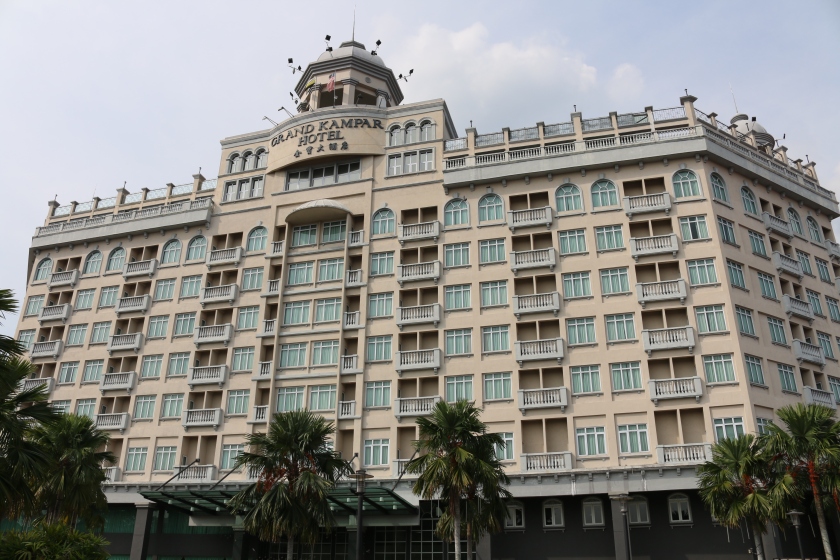
I’ll continue Part 2 of my High Road Across Malaysia trip in the next blog.

